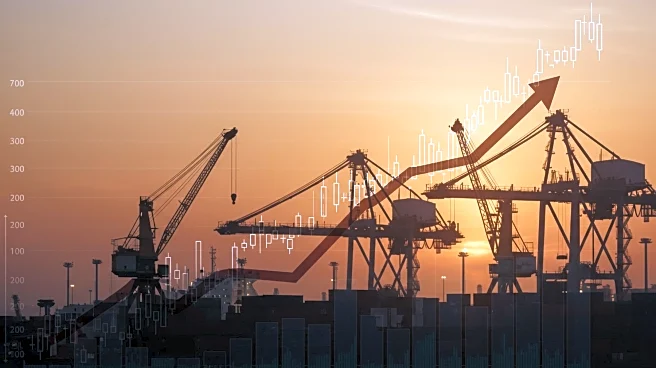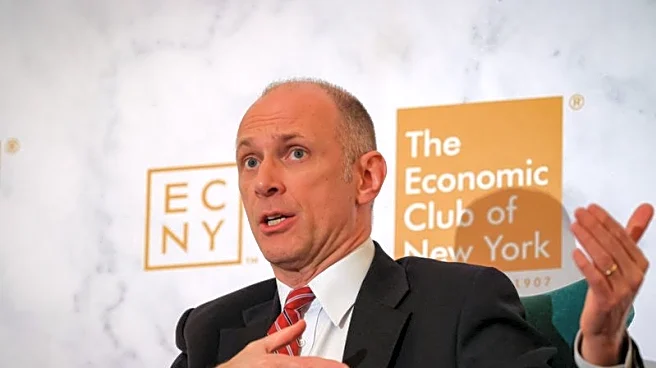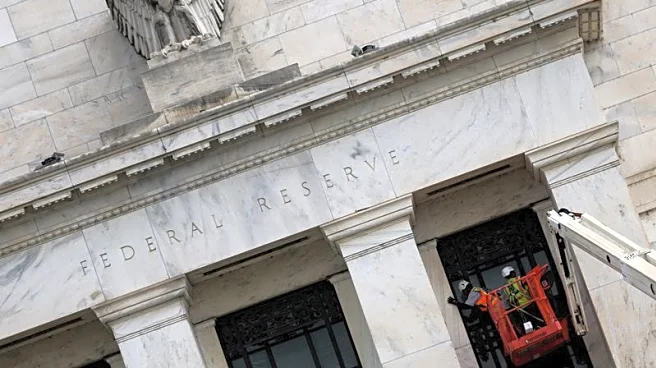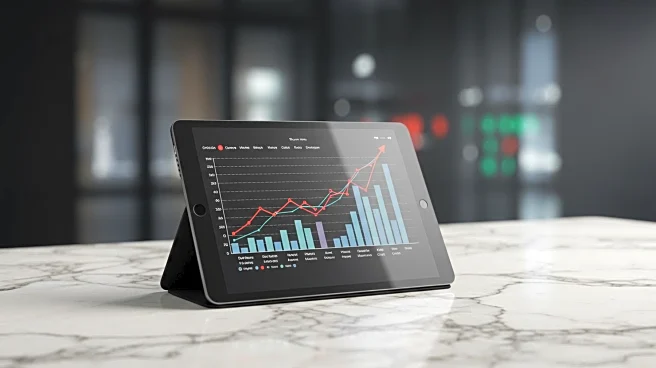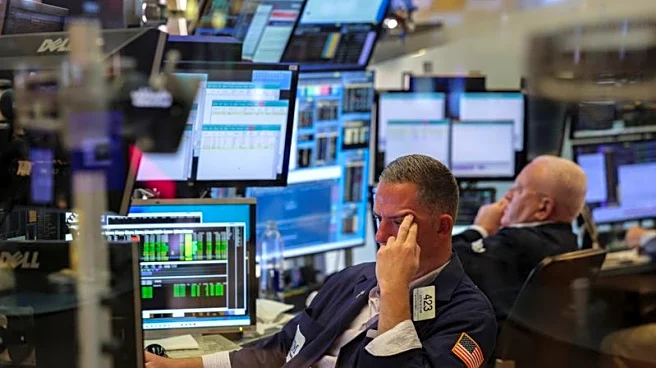What is the story about?
What's Happening?
U.S. wholesale inflation saw an unexpected rise in July, driven by President Trump's extensive tariffs on imports, which are elevating costs. The Labor Department reported a 0.9% increase in the producer price index from June, marking the largest jump in over three years. Year-over-year, wholesale prices rose by 3.3%. The surge in prices suggests that U.S. importers are currently absorbing the costs of the tariffs, but this may not continue indefinitely. Economists warn that these costs could soon be transferred to consumers, potentially exacerbating inflation. Core producer prices, excluding food and energy, also rose significantly, indicating broader inflationary pressures.
Why It's Important?
The increase in producer prices is a critical indicator of potential inflationary trends that could affect the broader U.S. economy. If importers begin passing these costs onto consumers, it could lead to higher consumer prices, impacting household budgets and potentially slowing economic growth. The Federal Reserve's inflation target of 2% is already being exceeded, which could influence monetary policy decisions. Businesses may face increased pressure to manage costs, potentially affecting profitability and investment decisions. The tariffs are also impacting international trade relations, with potential long-term effects on global supply chains.
What's Next?
As the tariffs continue to impact costs, businesses and consumers alike may need to adjust to higher prices. The Federal Reserve may consider policy adjustments if inflation continues to rise. Importers might seek alternative supply chains or negotiate cost-sharing arrangements with suppliers. The ongoing trade tensions could lead to further negotiations or adjustments in tariff policies, depending on economic and political pressures.
AI Generated Content
Do you find this article useful?
